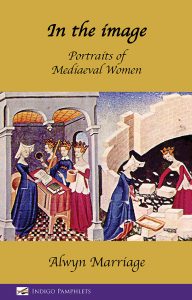An invitation to read my poetry to an international conference in Bergen inspired me to book a few extra days in order to explore a little more widely.

We therefore left home at 5.00am on a warm bright summer’s morning, to take a train through the rolling hills and woodlands of Surrey, passing an emerald green field in which three deer were having a leisurely breakfast. In contrast to this peace, Gatwick airport was frenetic: perhaps it wasn’t such a great idea to travel on a Saturday in June.
Leaving behind the English heatwave, we arrived in Bergen, reputedly the wettest city in Europe. We didn’t experience any torrential downpours, but became fairly resigned to persistent, though not constant, drizzle. However, Bergen is beautiful, and (armed with umbrellas) we enjoyed exploring the city and meeting the huge marching bands that frequently take over the roads. The Hanseatic buildings, in particular, are attractive and well-preserved; and the fish market down by the harbour is enough to make anyone’s mouth water.


We had booked a three-day tour with Norway on a Nutshell, so the next day we made another early start to take a train up over the mountain to Myrdal, on the snow-line. There we caught the famous Flåm Railway down the steep valley to the little town of Flåm in the far upper reaches of Sognefjorde, the longest and deepest fjord in the world. On the way down, the train stopped beside the Kjosfossen waterfall, so that we could all get out to enjoy the majestic spectacle. Tourists are treated to the sounds of a siren nymph singing to attract them to destruction, and a red-clad dancer also appeared on a rock above the waterfall, to entice any unwary travellers.

At Flåm we raced for a ferry that took us to our hotel at Aurland, a delightful village a couple of miles downstream. Here we had a fantastic room in a cabin that protruded right out over the fjord. We took our lunches outside a bakery, where they served excellent organic food.
The next evening we took another ferry on to Balestrand, where our hotel was immediately behind the charming Church of St Olav, built by an English woman in the 19th century. 

The following morning we climbed up the mountain to explore some of the nature trails through the forest, and in the evening took the high speed ferry back to Bergen, which involved travelling at 33 knots (almost 40 mph) for nearly four hours.

The conference started the next morning, and over the next three days I was surrounded by fascinating scholars from all over the world, all of whom were researching and publishing on the writings of mediaeval women. Some of the mediaeval women were familiar to me, indeed formed the subjects of my poems, but some of the presentations introduced me to characters and manuscripts that I had never come across before. The afternoon before the conference, we were given a tour of mediaeval Bergen, by a professor from Bergen University, which set the scene for the following days of lectures and presentations.

Professor Diane Watt is the power behind this particular Leverhulme-funded project; and she had very generously given me an hour in middle of the conference, to read from my recent publication, In the Image: Portraits of Mediaeval Women. I sold quite a number of books, which meant that my luggage was considerably lighter for the homeward flight. The conference was held at the University of Bergen, and all the major sessions, including mine, were held in what is called the EGG. Strung across the open space within the building, it does not appear particularly large, but is in fact a huge raked lecture theatre.


On the final evening of the conference we attended an excellent banquet in the Schợtstuene, the Hanseatic Assembly Rooms in the Bryggen. Then on the remaining two days of our visit to the city, we went to the University Museum, the Maritime Museum, and took an enjoyable tour out to Edward Grieg’s house at Troldhaugen, where we enjoyed a dramatic recital by the pianist Espen Aspaas, looking out at the view that Grieg would have enjoyed as he wrote.
